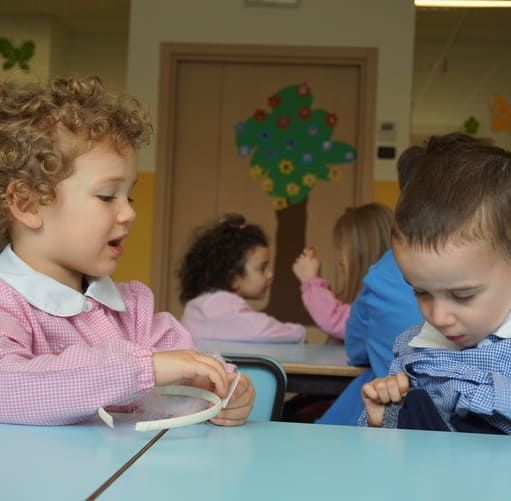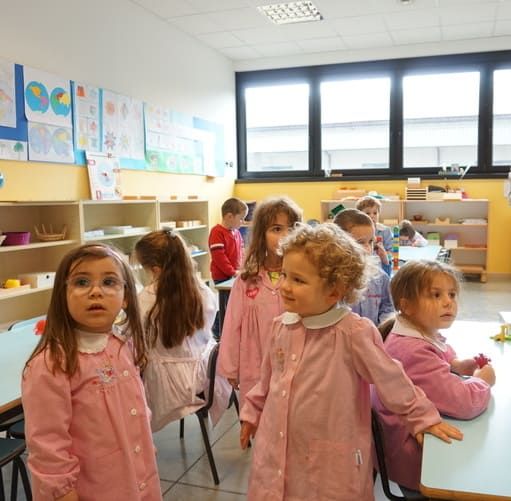Pre-school – Children’s home
“Children’s home – Assisi International School” welcomes children from 30 months to 6 years. Our pre-school combines the Montessori pedagogy, which distinguishes itself through its attention to a child-friendly environment and the material for specific development and the search for independence, with the Pedagogy for the Third Millennium characterized by its focused action on the importance of these early years for the cognitive growth of the child. It is a modern and original school, dynamic and in step with time, able to distinguish itself with the extraordinary attention given to each child.
It is a “home” because it is a welcoming, comfortable and child-friendly environment.
It is an environment that speaks to children, where everything is beautiful but also useful. It is the ideal place to move freely and reach an initial autonomy and personal identity: when children become independent they expand their ability to learn how to learn, immersed in an environment designed to stimulate curiosity and questioning. The classes are homogenous in regards to age and the program is organized in terms of objectives, so that all children get the opportunity to develop the competencies relevant to their age.
Thanks to a careful selection of teaching staff – constantly trained by the Foundation’s pedagogical team – individual observation, constant care for order, relational methods and the materials offered, an educational environment is created that responds to the needs of the child, allowing them to enhance their skills and understand the value of relationships within the peer group.
Additionally, the exposure to the English language already at such an early age facilitates the spontaneous and natural learning of a second language. There is also evidence that children who use more languages increase their cognitive development.
What will your child find:
- The Montessori Method
- A structured environment with materials for development
- Bilingualism
- An individual and differentiated educational path
- Prepared and constantly trained teachers
- Close involvement of the family
- Extracurricular projects
- Summer Camp
Our offer
-
Services
ORGANIC, LOCAL SCHOOL MEAL
Cafeteria
The AIS cafeteria is a real and true school project with various age-dependent, educational objectives. Taking care of the environment and the meal quality is certainly part of this project; for this reason the school has carefully studied the local organizations so that the meals served are mainly composed of ingredients that are organic and local. The proposed menu is authorized by the local authorities and is constantly reviewed to make all the improvements possible so that lunchtime is an all-out positive experience for the students.
NO SATURDAY SCHOOL
NO SATURDAY SCHOOL
HoursFrom 8.30 to 16.00, from Monday to Friday. Shorter school day and part-time possibility. .
Typical day8.00-9.00:arrival and welcome8,30-9,30:English first group (5 years Red)9.30-10.20:English second group (4 years Blue)10.20-11.00:English third group (3 years Yellow)9.00- 11.00:Montessori activities – motoric activities
sensory activities – graphic/painting for
the groups that remain in class11.00- 11.30:English first group11.30:first end of school11.30 – 12.40:lunch12.40- 15.00:free play, Montessori activities and workshops15.00- 15.30:snack15.30 -16.00preparation to go home -
Activity
WORKSHOP ACTIVITYWORKSHOP ACTIVITY
The afternoon activities program run by the teacher of the section varies.
Art and creativity are crucial for children, in fact art manages to involve all the senses, allowing the child to stretch to a free and fascinating world. The objective is to educate children in aesthetic taste, in forms and colors, thanks to specific activities inspired also by the seasons, holidays and special occasions such as recitals.
Free play – unstructured activity both in class and outside in our garden – is considered of great importance and value. It is considered fundamental for the child’s healthy development, through which competencies can grow such as learning how to collaborate, create together, resolve problems, establish relationships, experience emotions and perform. The children have the possibility to develop their autonomy significantly, finding strategies for reaching pre-established objectives.
They give themselves rules, set limits, reorganize their actions based on how the game is going. Motoric activity is another important moment, especially the exercises on the line, which are part of the Montessori curriculum. “The analysis of movements should be united with the economy of movements: not to move in any way that is superfluous to the aim is ultimately the highest level of perfection. As a result, the aesthetic movement, the artistic attitude becomes a consequence. The Greek movements and those that bear their likeness today, such as Japanese dance are no other than a selection of absolutely necessary movements, in the analytic sequence of the acts. But this does not only refer to art: it is a general principle in every act of life. An ungraceful, vulgar movement is generally full of acts that are not useful for the aim.
Using the natural inclination of the child to ‘work’ (creative energy) the Montessori method structures many exercises to explore and improve the surrounding environment.ENGLISH LANGUAGE PROJECT
ENGLISH LANGUAGE PROJECT
Purpose of the project
The main purpose of this project is to offer children the opportunity to acquire and develop a linguistic patrimony. For this reason, starting from 18 months of age, the English language is taught by a specialist mother tongue teacher everyday. Learning English in nursery school is an essential element for the integral formation of the personality of children, in as much as it familiarizes them to sounds different from their mother tongue and to cultures different from their own, fostering acceptance and understanding.
Organization of the activity
Language is a means of communication, therefore it is important that it is experienced in a concrete way. For this reason the English language will also be used functionally for other learning. This offers children the opportunity to use English in a natural way, so much so as to only concentrate on the contents to be learned. Any content can be taught by conveying a foreign language, and in that case learning the linguistic code and the contents of subjects are integrated. Contents and activities are specified in the English language vertical curriculum of the school.
CONTINUITY PROJECT
Spring section – pre-school
CONTINUITY PROJECT-Spring section – pre-school
Purpose of the projectAs soon as they have finished the acclimatization period, the Spring section students will participate in some of the educational and recreational activities in the classroom of the pre-school section with their teacher and the teachers of the pre-school. Especially in the hours from 3-4 pm the students will be gathered in a single classroom to participate in activities together.ObjectivesFacilitate children’s passage from the Spring section to the “Children’s home”, to the new educational context. Stimulate group work. Stimulate manual activities. Develop the ability to observe and listen. The continuity project involves all the children of the Spring section, the “Children’s home” and all the teachers.
WELCOME PROJECT
WELCOME PROJECT
The acclimatization of the child at pre-school is a fundamental experience that gradually introduces them to the new emotional and social context. For the child it represents a true passage from the intimacy and exclusivity of the family to sociality typical of school, and from the protective relationship with one’s parents to the autonomy inside of the class group. In the first phase the presence of one of the parents is necessary, who will be guided by the educator in helping the child understand the change and the new emotions that they experience; it is fundamental that parents are always calm, confident, welcoming and above all collaborative with the educators.
MENTAL CALCULATION PROJECT
MENTAL CALCULATION PROJECT
Purpose
The purpose of the project is for students to acquire multiple strategies to execute mental calculations, strategies that are not taught in a direct way, but by way of suggestion. The ability of mental calculation in fact is the basis of many other abilities of the ‘mathematical-logical mind’ and is often neglected in Italian schools in favor of written calculation. The idea is to give space to different strategies experienced by each student and share the most effective ones so that everyone can find those most appropriate to their own style of learning.
Objectives
Develop the potentials of numerical intelligence. Discover and analyze different ways of mental calculation. Encounter different strategies useful for mental calculation.Use the characteristics and operations with the aim of facilitating mental calculation and its automatization. Start with fast calculation, memorizing additions, subtractions, multiplications and divisions.
Activities
Take advantage of moments in which all children are sitting down (before or after lunch, before or after story time or singing a song, …), start to attract the attention and obtain silence and then insert 2 or 3 of the following activities
EDUCATIONAL ACTIVITY AND PLAY
EDUCATIONAL ACTIVITY AND PLAY
The aim of many of the activities carried out in the “Children’s home” is for children to acquire the necessary prerequisites to be able to afterwards successfully take on learning to read and write. Such learning starts and proceeds following two parallel paths, both equally important. While the first path develops the visual-perceptive and the graphic-motoric ability, as a preparation to the executive aspect of reading and writing, the second stimulates general linguistic competencies in the child: articulative fluidity and precision, phonological awareness, understanding and production of ever more complex verbal messages, enrichment of the lexicon and syntax. The phonological exercises proposed to the children in the “Children’s home” help children to:
- Reflect and recognize sounds positioned at the beginning and end of words.
- Recognize the form of words, differentiating between long and short ones.
- Recognize the phonetic resemblance between two words in rhyme.
- Differentiate all the sounds that make up the words of our language.
- Increment articulative fluidity through songs, nursery rhymes, tongue twisters, etc…
-
Teachers
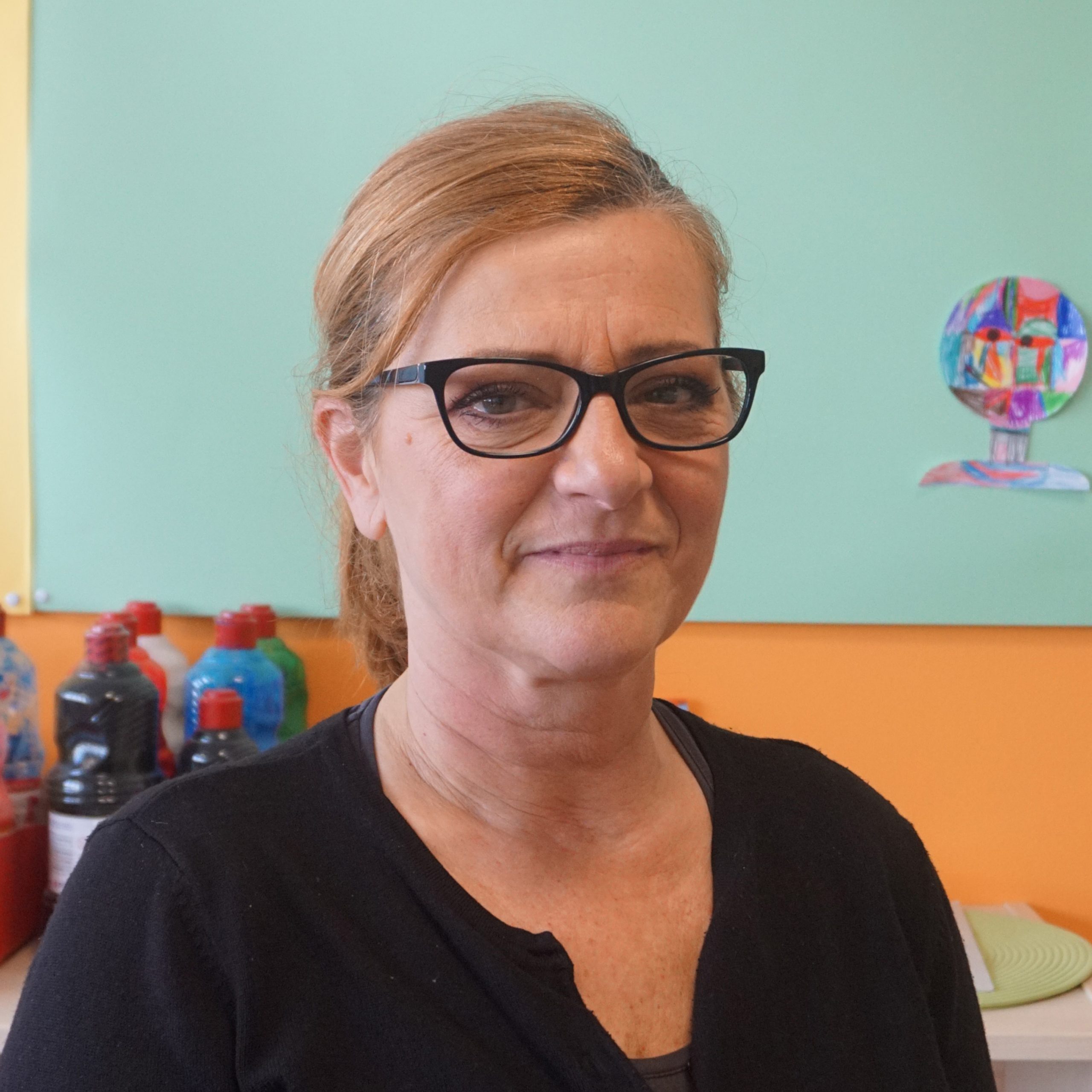
Stefania Casale
Teacher
Stefania Casale
Teacher
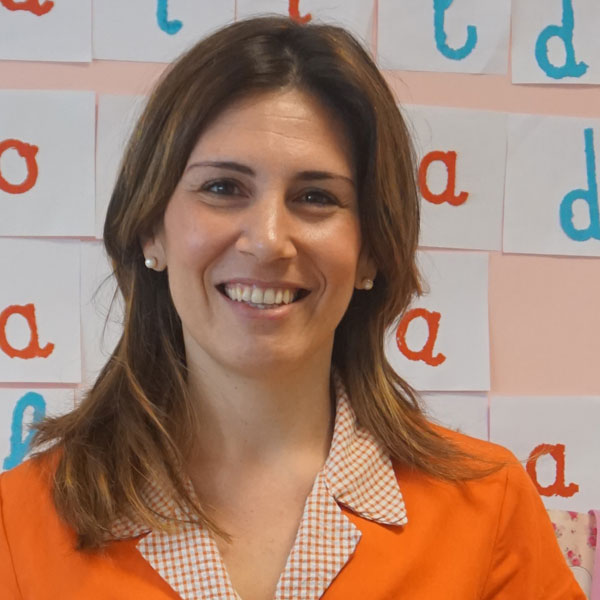
Lucia Tili
Teacher
Lucia Tili
Teacher

Wendy Hart
English teacher
Wendy Hart
English teacher


AIS Assisi International School
Via Cristoforo Cecci 2C,
06081 Santa Maria degli Angeli - Assisi (PG)
Tel: +39 075 9471123 e +39 371 1337341
E-mail: ais@fondazionepatriziopaoletti.org
Go to the Patrizio Paoletti Foundation website
Contact us for information and enrollment



